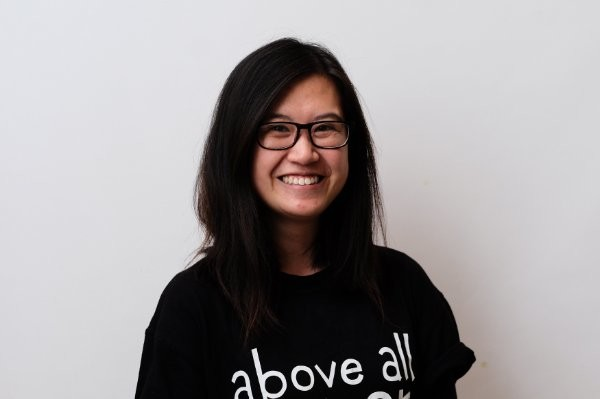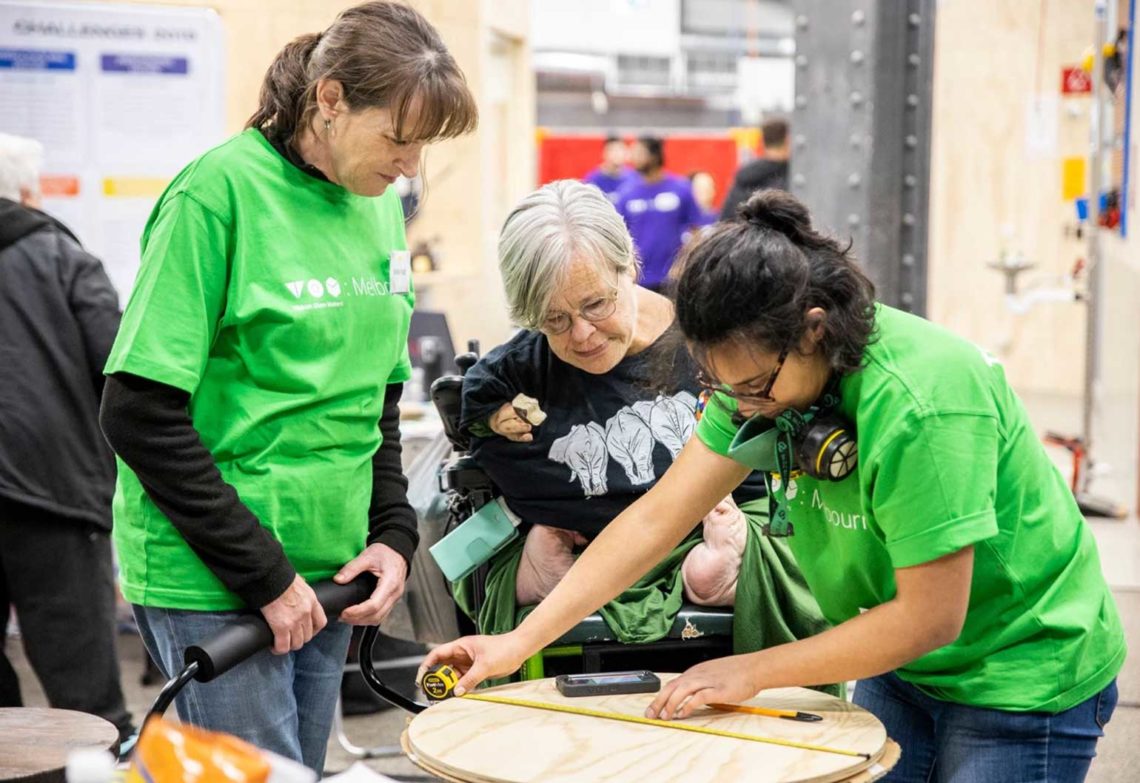There are more than 4.4 million Australians living with some form of disability — whether cognitive or physical, temporary or permanent, lifelong or acquired, visible or invisible.
This International Day of People a Disability (3 December), create spoke with two Australian engineers who are making the world more accessible.
As the Ainsworth Chair of Technology and Innovation at the Cerebral Palsy Alliance and the University of Sydney Faculty of Engineering and Information Technologies, Professor Alistair McEwan is passionate about engineering technological innovations to solve problems of real clinical need.

His research focuses on harnessing advancing technology to accelerate the search for new and improved treatments and interventions for childhood disabilities and illnesses, including cerebral palsy — the most common cause of physical disability in childhood.
“With Sydney’s Saluda Medical, we are most excited about the potential to offer the equivalent of a cochlear implant, which unlocks spasticity in cerebral palsy by stimulating the spinal cord,” he told create.
“[This has] the very exciting possibility that similar electrical stimulation could help restore movement with a digital connection from the brain the limbs.
“We are also looking at brain-computer interfaces like those created by Braingate in the United States and Synchron in Melbourne to unlock speech for the large number of people with cerebral palsy who have speech disabilities.”
McEwan’s research group recently modelled the cochlear implant using full electrical properties to better understand where the electrical stimulating current flows.
This information could be used to better target the stimulation, improving the experience for users and improving battery life.
“We’re also working with Dr Mark Tracy at Westmead Hospital Neonatal Intensive Care Unit,” he said.
“Engineering students have developed a resuscitation monitor that is intended to reduce brain injury and resulting disability.”
The theme for International Day of People with a Disability 2020 is ‘Building Back Better: toward a disability-inclusive, accessible and sustainable post COVID-19 World’, and McEwan said that he and his researchers certainly felt the gravity of the pandemic in their work this year.
“The effect of COVID-19 has been to shift the focus of several projects towards telehealth,” he said.
“For example, one student, Aminah, focused on the question of how to test alternatives to Botox she was developing by using AI-based pose estimation of video at home. Another student, Carter, changed his topic from measuring body composition in newborns to developing an automated assessment of autism from video data.”
If that wasn’t enough to keep them busy, McEwan said his team has some interesting projects in the works to better detect neurodevelopmental conditions such as cerebral palsy and autism as early as possible using computer vision techniques with very large datasets collected by medical researchers.
Makeathons to make a difference
Product design engineer Kellen Huang is part of the team at TOM:Melbourne. TOM, or Tikkun Olam Makers, is a global movement of communities that creates and disseminates affordable solutions to the neglected challenges of people living with disabilities, older people and the underprivileged.
“One of TOM:Melbourne’s flagship activities are our Makeathons where we bring together two groups of people,” Huang told create.

“Firstly, there’s ‘need-knowers’ — people with a disability or direct knowledge of disability — and then there’s ‘makers’ — people with technical skills.
“At the Makeathons, makers work with their need-knower to create a product that can help improve the life of the need-knower based on their needs and requirements.”
Huang and her colleagues take designs from research into reality by constantly prototyping, asking questions and testing until it’s right for the need-knower.
Then they upload the final design files onto TOM’s website so that anyone around the world can affordably recreate the product if they or someone they know needs it.
“One project we are working on is a transparent face mask,” Huang said.
“Essentially, these are masks with a transparent section for use of those who work with the deaf and hard of hearing community, as many of the people they work with rely on lip reading, which has been a hard task in the wake of mass introduction of face masks to deal with COVID-19.
“We look forward to donating these masks to this community and others who will benefit from their use.”
In addition to individual design projects, TOM:Melbourne is currently working on developing a schools programs to be delivered to primary and secondary students, as well as expanding its more hands-on university project.
“We want to increase awareness around disability and STEM education from a young age and show how students can help create a more inclusive society using STEM skills,” Huang said.
“We have just run our first online pilot TOM @ Schools program, which was a success.
This is just the beginning, as the global network has ambitious aims.
“TOM Global’s moonshot objective is to help 250,000,000 people by inspiring and supporting a global network of communities dedicated to its vision of creating a world in which technology and innovation allow every person access to affordable solutions for his or her needs,” Huang said.



